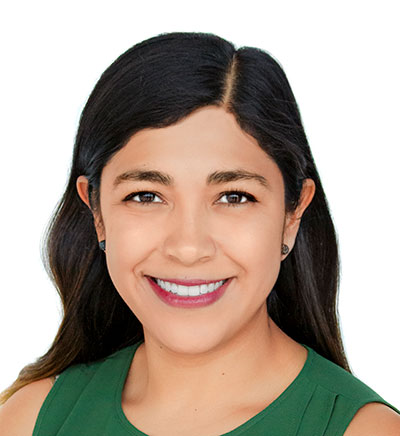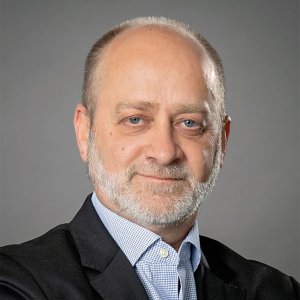Pension Fund Reform Needed for Economic Stability

Q: What is AMAFORE’s role in the Mexican pension fund segment?
A: We are a civil association that represents the nine private pension fund managers (Afores) in the country, one of which is capitalized by IMSS and Banorte. Our goal is to explain clearly to Mexican workers the job of Afores, their responsibilities and the rights that workers have. We are aware that there is misinformation and myths regarding Afores and what they do, so education is one of our main priorities. We represent the industry before the authorities, unions and business councils and actively promote the financial education of workers.
Q: What are the most pressing challenges that AMAFORE faces when creating a permanent dialogue with the government and business organizations?
A: The challenge is related to misinformation. Mexican workers have several misconceptions about Afores. Our job is to understand where this is coming from. We also inform people about the changes needed in the pension law. We have been promoting a reform to the system and the laws overseeing the industry because the parameters that determine a worker’s pension, that is the mandatory contribution and the weeks required to access a pension, do not represent the current reality.
Two changes are fundamental for the system to improve. The first is to increase workers’ contributions to their pension, since mandatory savings are very low. The second change relates to the requisites for workers to access their pension.
When it comes to increasing workers’ mandatory savings, there is resistance from several actors. The first is the unions that say workers earn very little and that they cannot provide more money from their wages for long-term savings. The government says that it cannot contribute more to workers’ savings since it has several budgetary pressures. Businesses tend to contribute the most to workers’ savings. The private sector is the least restrictive when it to comes to increasing contributions. In terms of changing the requisites for retirement, we believe that reducing the number of weeks worked that are needed for retirement could be a feasible option. However, when you tell the government it needs to reduce the number of weeks worked, the answer is that this measure would have an impact on public finances. This is a problem that demands creative solutions. It is a challenge to find the formula that will allow a perfect balance.
Another challenge is related to those who are part of the scheme that was implemented after 1997. The problem is that their mandatory contribution is very low, which makes it harder to achieve a better pension. The proposed reform also includes finding solutions for people who are going to retire under this scheme in a few years so they can do so with dignified pensions.
The other element to consider is perception. Low contributions make it harder to achieve a better pension. If everyone believes that this is the Afores’ fault, it is harder for institutions to propose something. It is important to inform people that the job of the Afores is to invest workers’ money and that they do not have a say on the level of contribution, which is the main determinant of the pension. So far, Afores have performed very well investing the money, offering returns that no other player in the market has achieved.
Q: What opportunities exist for Afores to invest, not only in publicly funded projects like NAIM, but also in private capital projects?
A: One of every four pesos spent on infrastructure in Mexico comes from Afores. This means that we are a significant institutional investor in the infrastructure sector. The limits established by CONSAR, which is the corresponding Afore regulator, are underused. This means that we could invest around MX$700 billion (US$37.2 billion) more than what we have already invested in infrastructure. Since Afores have to ensure a good return with reasonable level of risk, the challenge is finding enough projects that are both technically and financially viable. This is what we are missing in the country. There is no list of projects that are a priority for the development of the country. For the projects that are considered priorities, the technical and financial studies are not done, which prevents institutional investors from participating.
There are many Afores already investing in certain CKDs that produce palm oil and that attend the primary sector. However, there are not many products of this type. Afores have the resources and if the project makes sense, they will invest.
Q: What are the investment trends you perceive globally regarding pension funds?
A: We are seeing investment funds investing in other countries and not only in their country of origin. For instance, in Canada, you can find some of the largest funds in terms of size in the world and they are investing in many countries, including Mexico. The reason is because the main objective of pension funds is to guarantee better pensions and larger yields. If funds can generate larger returns in other parts of the world, it makes sense to make that investment.
Mexico has legal restrictions that state only 20 percent of the resources managed by Afores can be invested abroad. However, it is important to be flexible. Afores need the freedom to go elsewhere to look for positive returns.
There’s an interesting trend on investing funds in companies involved in ESG policies. Institutional investors have the power of reshaping how businesses are made and contributing to better ways of producing that are kind to the environment and fair to all.
Q: How can the country escape the debt and crisis trap that countries like France are experiencing?
A: Mandating contributions from the working force to maintain those who are retired is a good social security mechanism. These systems were created in the 19th century and in that moment, the pool of active workers was larger than the pool of retired workers. However, the population dynamic has changed significantly. Countries like France that have not modified their pension system are putting a heavy burden on younger generations to pay their retired population. Public finances are being pressured and governments find it very difficult to withdraw benefits from workers, even though is equally difficult to find new funds for these pensions.
Mexico changed its pension scheme in 1997, but the change was not ideal because the savings parameters did not take into account the reality of the country. Nevertheless, governments have been bad at managing long-term pension funds. These resources should not be managed by experts and should be perfectly invested in projects that generate a return. However, when managed by the government, we sometimes find that these resources are invested in current expenditures and a range of projects that do not yield the expected results. This combination generates a problem for public finances. It has taken us more than 22 years to incorporate a solid system that works. The problem is that if we do not adjust these parameters, there will be social unrest among workers. That is why we insist that it is irresponsible to not do anything. We need a reform that has been in the making for several years but the wills of the three main actors have not converged.
AMAFORE is a civil association that represents the nine private funds that manage workers’ pension funds. It was founded in 1997 to consolidate and strengthen the pension fund system




 By Gabriela Mastache | Senior Journalist and Industry Analyst -
Thu, 05/21/2020 - 19:03
By Gabriela Mastache | Senior Journalist and Industry Analyst -
Thu, 05/21/2020 - 19:03















